| | SITE MAP | | | PREVIOUS PAGE | NEXT PAGE | |
 |
THE PRAKTINA SYSTEM CAMERAS |
Praktina Prototypes
The history of the Praktina begins in April 1947 when Siegfried Böhm began the study for a project of a new 35mm SLR camera completely different from those produced by Kamera-Werkstätten at that time.
Böhm was transferred from Zeiss Ikon to Kamera-Werkstätten in January 1946. Very young, only 24 years old, he was commissioned to improve the build quality of the Praktiflex and to review the design which showed manufacturing defects. Changes were made mainly concerning the movement of the mirror, the shutter and the screw attachment of the lenses which was changed from M40 to M42 to avoid vignetting with telephoto lenses. Despite these improvements, the goal to be achieved was a new Praktiflex, technically more modern and easier and cheaper to manufacture. So Böhm, since 1948 work manager of Kamera-Werkstätten, carries on the project for a new camera, on the basis of the old Praktiflex, that will be presented in 1949 under the name Praktica.
However the aspiration of Böhm was to create a camera with much more advanced technical features than the Praktiflex. Unfortunately this aim was in conflict with the primary commitments received by Kamera-Werkstätten. A compromise was found. Böhm obtained permission to conduct a private study at home with the assurance that he can use the equipment of the Kamera-Werkstätten as long as the personal work did not interfere with his work commitments at Kamera-Werkstätten.
For the new camera Böhm began to design a new type of shutter with a single-axis non-rotating shutter speed dial for slow and high speeds. A real revolution compared to the complicated systems used by other cameras. In 1949 the study of the new camera became a real project and from 1950 a team of about 30 people was involved in the design of the camera and of its numerous accessories. In 1952 the high-level 35mm SLR camera, very strongly wished from Böhm, became a reality.
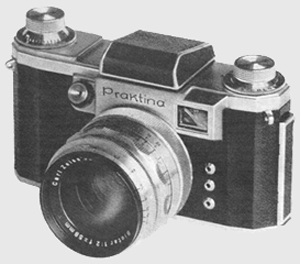
The Kamera-Werkstätten VEB Niedersedlitz presented the Praktina for the first time at the Photokina held in Cologne in April 1952. At the trade fair held in Leipzig from 7 to 17 September 1952 the presentation of the Praktina camera together with many accessories marked the birth of the first professional 35mm SLR system. The availability of the new camera was expected in the second half of the following year.
The Praktina aroused great interest due to the innovative features. Lens, finder, focusing screen and camera back are interchangeable. Furthermore, a winding coupler is located at the bottom of the camera body for connection with a spring winder or an electric motor drive.
To mount the lenses on the camera body there was a breech-lock system. The lens is attached to the camera by means of a rotating ring, fixed to the body, which is used to tighten the lens to the camera by friction. The camera was fitted out with a horizontal-travel focal-plane shutter with cloth curtains and shutter speeds of 1 to 1/1,000 sec adjustable by a single dial. The camera was also equipped with a self-timer and an optical viewfinder.
The 1952 prototypes have the name Praktina engraved on the front and three single-pole flash connectors.
 |
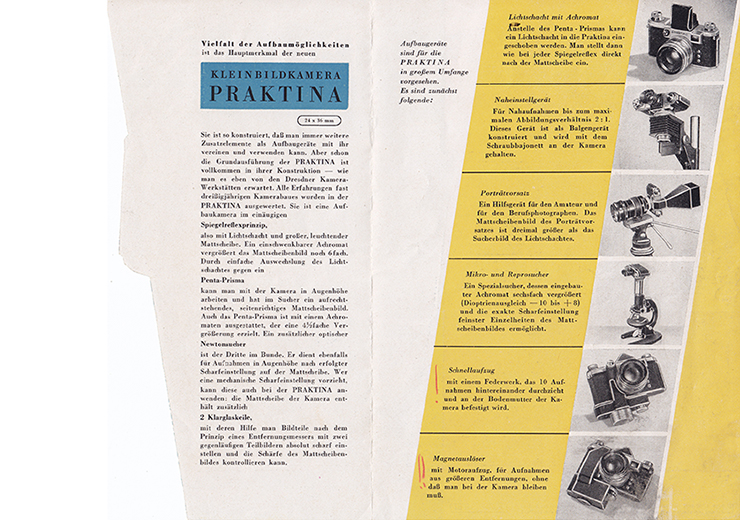 |
| Praktina brochure of 1952 | |
Prototypes, Cameras and Accessories, 1952-1953
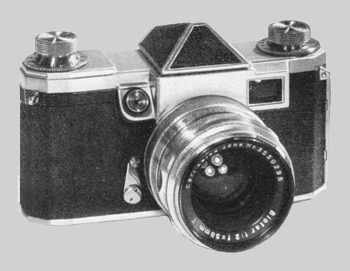 Praktina in "die fotografie", November 1952 |
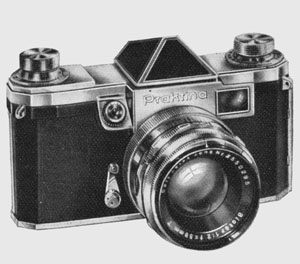 Praktina in "Photo magazin", November 1952 |
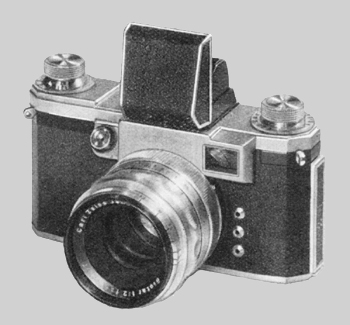 Praktina in "die fotografie", November 1952 |
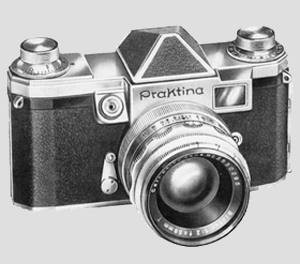 Praktina |
 Praktina in "Bild und Ton", September 1953 |
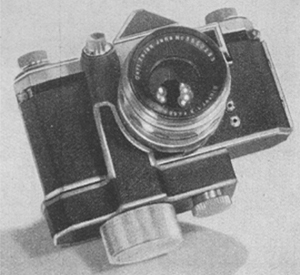 Spring Winder in "Die Fotografie", November 1952 |
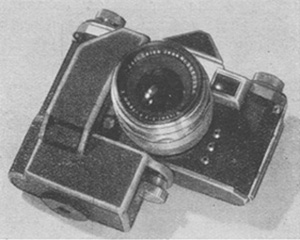 Electric Motor Drive in "Die Fotografie", November 1952 |
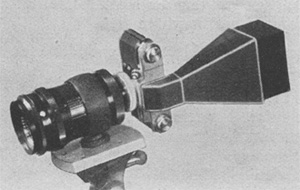 3x Portrait Finder in "Die Fotografie", November 1952 |
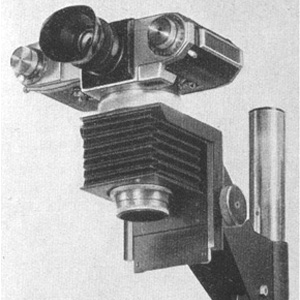 Bellows Attachment in "Die Fotografie", November 1952 |
| | SITE MAP | | | PREVIOUS PAGE | NEXT PAGE | |
Last update January 2022
Copyright © 2000-2022 Alberto Taccheo. All rights reserved.
